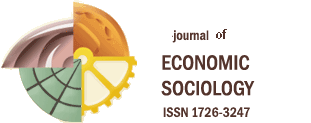Leila Natsun, Olga Kalachikova
Contribution of Assisted Reproductive Technologies to the Reproductionof the Russian Population and Social Aspects of their Application
Assisted reproductive technologies (ART) are perceived in modern society as one of the ways to increase the birth rate of the population. Despite the fact that they do demonstrate a noticeable increase in the effectiveness of increasing the share of successful cycles leading to pregnancy and childbirth, their contribution to the total number of births in Russia remains modest — only 2% (as of 2018). The role of ART is determined to a greater extent by their social significance: the development of this area provides an opportunity for the birth of children to those married couples who have problems with reproductive health. The present study shows what factors hinder the population's access to ART, and provides an assessment of the proportion of families that make up the potential for expanding the scale of coverage of the population with these services. The key factor determining the willingness to turn to assisted reproductive technologies is the presence of unrealized reproductive plans in the family. Based on the data of a representative sociological survey, it was found that respondents who demonstrated a willingness to resort to ART for the birth of children had a significant gap between the planned and actual number of children in the family. Such families were mostly prosperous, and showed a willingness to take risks associated with ART (for example, associated with a higher probability of having twins). In the final part of the work, conclusions are formulated regarding the prospects for expanding the use of ART in the regions of Russia. It is shown that the most significant barriers that limit this growth are the relatively cautious perception on the part of the population and payment for some concomitant procedure by the patients.




.gif)






 ©
© 